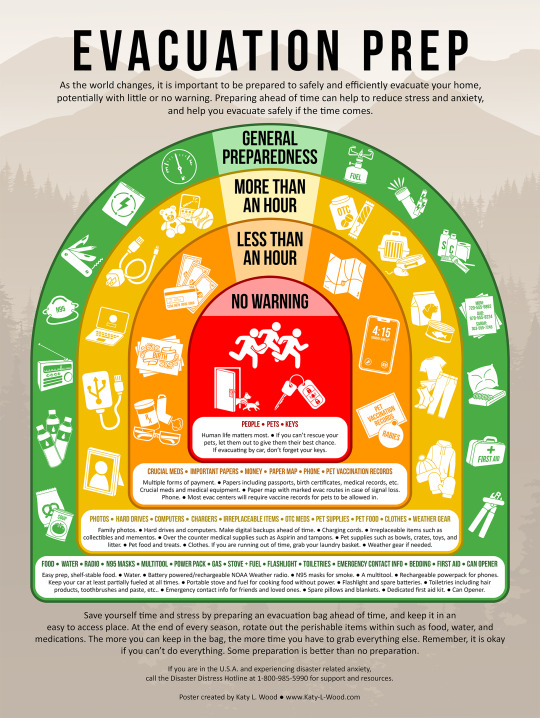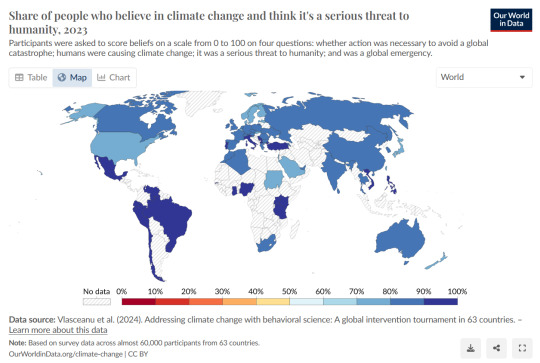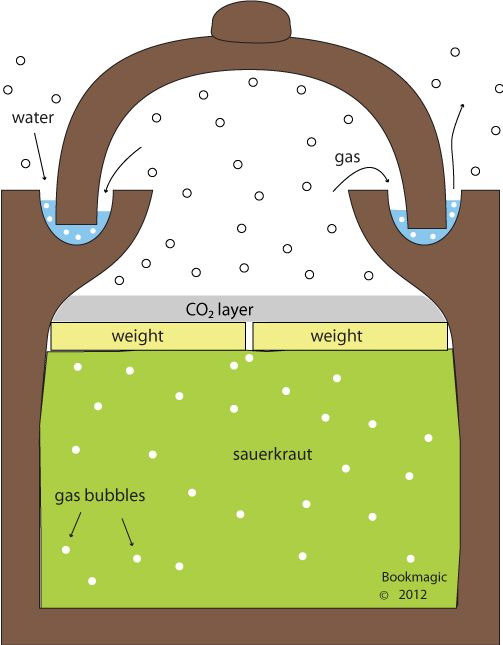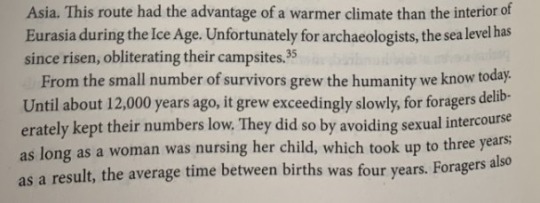A solarpunk blog with a focus on the technology and practical logistics needed to build a better world. Expect lots of science, engineering, and home workshop stuff, with a smattering of relevant politics and economics.
Last active 60 minutes ago
Don't wanna be here? Send us removal request.
Text
Book Club
What is a book related to solarpunk that has made you feel like a different person after reading it? That changed the way you looked at an issue, that made you reevaluate everything you knew about a topic, that made you walk around in a daze as thoughts swirled around your head too fast to make sense of? (That last one might just be me)
Let's talk about them! I'll go first. Walkable Cities: How downtown can save America, one step at a time, by Jeff Speck.
I'm actually not even all the way through it yet, but it's making me want to pack up and move to a city, when I have always been rather adamant that I never want to live in that populated of an area, after having lived rural for so much of my life. The idea of not having to own a car or drive one is incredibly appealing, but the evidence provided about the impacts of so many of us having personal vehicles is damning. The fact that so many cities are intentionally designed for cars, at the literal monetary expense of pedestrians, is absurd. The amount of pollution that is produced, the dependence on gas, the fact that most of the money spent on cars and fuel goes straight out of the community and to line the pockets of the rich is infuriating. Electric and hybrid cars don't solve these problems.
So this book is changing my life. What book should I read next that will change it more?
297 notes
·
View notes
Text


Flip the House in 2026.
Fcuk Musk. Fcuk Trump.
Wisconsin beat the billionaire.

2K notes
·
View notes
Text

https://www.euronews.com/green/2024/12/29/the-japanese-micro-forest-method-is-transforming-cities
The Japanese ‘micro-forest’ method is transforming cities
14K notes
·
View notes
Text
Soil solarization for weed control
Here’s an interesting idea for reducing weeds. I think it would be useful for areas with a significant density of out-of-control weeds, to give the area a restart. It’s an alternative to using chemical weed killers, but as the article states, the downside is that sheets of plastic are used. Heavier plastic sheets that can be reused for several years would help offset the use of the plastic.
A few years ago, I was recovering from an illness that left me very fatigued for a few months. The weeds in my raspberry patch were proliferating, and I didn’t have the energy to pull them. I cut the flowers off the weeds before they could produce seeds, and the next year there were almost none of that kind of weed in my raspberry patch. So, with an annual weed that relies on yearly reseeding, one way to control it is to prevent seed formation by mowing or clipping the flowers.
72 notes
·
View notes
Text
"In a degraded and semi-arid farming area in India, simple science-driven changes to the landscape have colored the horizon, and a village’s fortunes, with green.
In the Latur district in the central western state of Maharashtra, 40 years of erratic rainfall, groundwater depletion, soil erosion, and crop failures have impoverished the local people.
In the village of Matephal, the International Crops Research Institute for the Semi-Arid Tropics (ICRISAT) launched a project in 2023 that aimed at addressing these challenges through integrated landscape management and climate-smart farming practices. [Note: Meaning they've achieved this much in just two years!]
Multiple forms of data collection allowed ICRISAT to target precise strategies for each challenge facing the 2,000 or so people in Matephal.

Key interventions focused on three critical areas: water conservation, land enhancement with crop diversification, and soil health improvement. Rainwater harvesting structures recharged groundwater around 1,200 acres, raising water tables by 12 feet and securing reliable irrigation. Farm ponds provided supplemental irrigation, while embanking across 320 acres reduced soil erosion.
Farmers diversified their crops, converting 120 or so acres of previously fallow land into productive farmland with legumes, millets, and vegetables. Horticulture-linked markets for fruits and flowers improved income stability.
Weather monitoring equipment was also installed that actively informed sustainable irrigation practices.
“It is a prime example of how data-driven approaches can address complex agricultural challenges, ensuring interventions are precise and impactful. Matephal village is a model for other semi-arid regions in India and beyond,” said Dr. Stanford Blade, Director General-Interim at ICRISAT.
Farmers actively participated in planning and decision-making, fostering long-term commitment.
“This ICRISAT project improved yields, diversified crops, and boosted incomes. It also spared women from walking over a kilometer for drinking water, now available in the village for people and animals,” said Mr. Govind Hinge of Matephal village.
Looking ahead, ICRISAT writes it wants to use Matephal as a case study to scale these methods across India’s vast and drier average. As Matephal’s fields flourish, the village is a testament to the power of collaboration and science in transforming lives and landscapes."
youtube
-Article via Good News Network, March 3, 2025. Video via International Crops Research Institute for the Semi-Arid Tropics (ICRISAT), February 26, 2025
737 notes
·
View notes
Text



Brazilian photographer Sebastião Salgado and his wife, Lélia Deluiz Wanick Salgado, have been instrumental in reforesting the Rio Doce Basin area in Brazil since 1998. Through their organization, Instituto Terra, they have planted over 2.7 million trees, successfully restoring more than 550 acres of forest and 2,000 natural springs. 
Their efforts have transformed a once barren landscape into a thriving forest ecosystem, demonstrating the profound impact that dedicated reforestation initiatives can have on environmental restoration.
22K notes
·
View notes
Note
Hey! I thought your talk on stream about your go-bag and what's in it was interesting, but I process text better than audio, so I was wondering if you had advice on putting one together? It's fine if you'd rather not! Thanks either way!
Okay! Note that some of these things are gearing up in prep for sudden homelessness or natural disaster (tornados, personally) but some are just generally good things on hand you might need to keep. Also, some tips involve a car, skip those if they dont apply.
You're going to want a backpack or duffle bag with comfortable enough straps that are thick and sturdy enough to hold the weight of everything you are carrying while also keeping you balanced. I got my blue one at a charity give away for students in poverty, those heavy duty school bags for textbooks, but you can thrift the same bags for around $5-$10, at least in my area.
What I have in the front pockets, in smaller ziplock bags:
Ziplock bag of first aid supplies (bandaids, gauze, sterile wipes, ect)
Small hand sanitizer, bottle or wipes.
Baby wipes, water based.
Matches
Small travel deoderant, small travel shampoo, travel hairbrush, and the bare minimal needed for a 'freshed up look' of make up like concealer, mascera, and face wash. Good for spucing up for job interviews if you end up in a situation where you're living out of your car, and can't acsess a full bathroom.
Menustration products. Pack SEVERAL if you are someone who bleeds, or a few if you just want some on hand just in case for someone else you are with.
Mouthwash, toothbrush and toothpaste. If you don't have enough room, opt for mouthwash/toothpaste combo, and just rub it on your teeth.
Self-protection, dependant on what you prefer. I keep pepper spray and a tazor in the car at all times, and in the bag if not out in the console.
Pocket knife and scissors. You never know when you might need to cut something.
If you can get some and they fit in the bag: Gloves meant for gardening. Thick enough to protect you if you go dumpster diving. I have a list of tips of safe and legal dumpster diving here.
What I keep in the main pocket of the bag:
A large gallon ziplock baggy with emergency clothes in it, consisting of: Pants, short sleeve T-shirt, and 3 pairs of underwear/socks. If you can fit it, slip a long-sleeve shirt in there as well. Keep a 'nice shirt' like a button up or something 'nice casual' in there for job interviews.
You're going to want a jacket in your go-bag, but since they can be bulky, it might be best to just leave one in your car. Also good for when you're out somewhere and just get cold suddenly.
RAIN! I have a small one-person umbrella in the side pocket of my bag, and a yellow poncho from walmart in main pocket. I recommend having both, but its fine if you just can fit one.
A bag of COMFY clothes, aside from the intial emergency clothes. For me, I call it the pajamma bag, which just has a pair of sweatpants, T-shirt and fuzzy socks.
FOOD AND WATER. I keep ziplock baggies of non-perishable food in the bag like: granola bars, slim jims, fruit gummies, cans of preserved fruit, ect. You need to pack at least 2 bottles of water. I think I freaked out Twitch stream a little bit when I pulled out 6 bottles of water out of the bag, but I'm telling you: the more water you can carry, the better.
The 'entertainment satchel', which is basically anything that you can do that doesn't require electricity like your phone does that can keep you busy. For me, it's a ziplock bag of a journal/sketchbook with some colored pens. This can be a small book or something.
A sewing kit. One of those travel ones, the tiny tin ones. Comes in handy plenty of times.
A water-tight folder/baggie that will protect legal documents for you. You probably wont keep them in the car, but if you can grab them on your way out, keep them safe in something they can't get damaged in.
A portable battery, a cord for charging your phone and extra wall thingie to plug it into. You can get a decent battery for around 20 bucks on amazon, and your car and public spaces like a library can let you charge your phone.
PETS! If you have a pet with you, PLEASE pack the things needed for them ahead of time in your go-bag. Doggy bags and treats and food and the like. I'm a cat person, so I keep three ziplock baggies: one with treats, a large one with food, and one with cat litter in it. You can usually grab a cardboard box by a dumpster for a make-shift litterbox if need be.
Depending on who you talk to, money may or may not be a smart thing to keep in your bag, but I say keep at least $50 of cash in there for absolute emergencies, if you can afford to store it.
An extra pair of shoes. If they don't fit in the bag, you can store them in the car, or tie them to hang off the bag if you really need them.
Also, not really go-bag related, but I suggest keeping a blanket in your car. If you don't have a car, they make blankets with straps that you can attatch to your backpack, or you can take a long sock or piece of fabric, wrap it around a rolled up blanket, and tie it to your bag. It might not look aesthetic, but it'll be worth it to have it.
Change out the items in your bag every couple months, usually as it starts to get colder or hotter. Currently I'm changing out my stuff from summer items to winter items, like warmer clothes and what not, so I had the bag already near me to show twitch chat. Thanks for everyone that came by Twitch chat and talked by the way, it was fun!
4K notes
·
View notes
Text

The evacuation prep poster is done! This poster is designed primarily with wildfires in mind, but the tips can apply to preparing for any much any disaster.
If you share this image outside of tumblr, please link back to my website: www.Katy-L-Wood.com
[[Image ID: A poster including a layered graphic showing what items to have ready to prepare for evacuating your home based on how much warning you have that you need to evacuate. The inner, red, level is labeled “No Warning.” The next, orange, level is labeled “Less Than an Hour.” The next, yellow, level is labeled “More Than an Hour.” The final, green, level is labeled “General Preparedness.” The items associated with each level and the text are included below. /end ID.]]
———-
Evacuation Prep:
As the world changes, it is important to be prepared to safely and efficiently evacuate your home, potentially with little or no warning. Preparing ahead of time can help to reduce stress and anxiety, and help you evacuate safely if the time comes.
Red Level (No Warning): People | Pets | Keys. Human life matters most. If you can’t rescue your pets, let them out to give them their best chance. If evacuating by car, don’t forget your keys.
Orange Level (Less Than an Hour): Crucial Meds | Important Papers | Money | Paper Map | Pet Vaccination Records. Crucial meds and medical equipment. Papers including passports, birth certificates, medical records, etc.. Multiple forms of payment. Paper map with marked evac routes in case of signal loss. Phone. Most evac centers require vaccine records for pets to be allowed in.
Yellow Level (More Than an Hour): Photos | Hard Drives | Computers | Chargers | Irreplaceable Items | OTC Meds | Pet Supplies | Pet Food | Clothes | Weather Gear. Family photos. Hard drives and computers. Make digital backups ahead of time. Charging cords. Irreplaceable items such as collectibles and mementos. Over the counter medical supplies such as Aspirin and tampons. Pet supplies such as bowls, crates, toys, and litter. Pet food and treats. Clothes. If you are running out of time grab your laundry basket. Weather gear if needed.
Green Level (General Preparedness): Food | Water | Radio | N95 Masks | Multitool | Power Pack | Gas | Stove + Fuel | Flashlight | Toiletries | Emergency Contact Info | Bedding | First Aid | Can Opener. Easy prep, shelf-stable food. Water. Battery powered/rechargeable NOAA weather radio. N95 masks for smoke. A multitool. Rechargeable power pack for phones. Keep your car at least partially fueled at all times. Portable stove and fuel for cooking food without power. Flashlight and spare batteries. Toiletries including hair products, toothbrush and paste, etc.. Emergency contact info for friends and loved ones. Spare pillows and blankets. Dedicated first aid kit. Can opener.
Save yourself time and stress by preparing an evacuation bag ahead of time and keep it in an easy to access place. At the end of every season rotate out the perishable items within such as food, water, and medications. The more you can keep in the bag, the more time you’ll have to grab everything else. Remember, it is okay if you can’t do everything. Some preparation is better than no preparation.
If you are in the U.S.A. and experiencing disaster related anxiety call the Disaster Distress Hotline at 1-800-985-5990 for support and resources.
———-
If you share this image outside of tumblr, please link back to my website: www.Katy-L-Wood.comf
62K notes
·
View notes
Text




ICE raids happening in Chicago on Tuesday January 21st. Get organized and get prepared.
29K notes
·
View notes
Text
"People across the world, and the political spectrum, underestimate levels of support for climate action.
This “perception gap” matters. Governments will change policy if they think they have strong public backing. Companies need to know that consumers want to see low-carbon products and changes in business practices. We’re all more likely to make changes if we think others will do the same.
If governments, companies, innovators, and our neighbors know that most people are worried about the climate and want to see change, they’ll be more willing to drive it.
On the flip side, if we systematically underestimate widespread support, we’ll keep quiet for fear of “rocking the boat”.
This matters not only within each country but also in how we cooperate internationally. No country can solve climate change on its own. If we think that people in other countries don’t care and won’t act, we’re more likely to sit back as we consider our efforts hopeless.
Support for climate action is high across the world
The majority of people in every country in the world worry about climate change and support policies to tackle it. We can see this in the survey data shown on the map.
Surveys can produce unreliable — even conflicting — results depending on the population sample, what questions are asked, and the framing, so I’ve looked at several reputable sources to see how they compare. While the figures vary a bit depending on the specific question asked, the results are pretty consistent.
In a recent paper published in Science Advances, Madalina Vlasceanu and colleagues surveyed 59,000 people across 63 countries.1 “Belief” in climate change was 86%. Here, “belief” was measured based on answers to questions about whether action was necessary to avoid a global catastrophe, whether humans were causing climate change, whether it was a serious threat to humanity, and whether it was a global emergency.

People think climate change is a serious threat, and humans are the cause. Concern was high across countries: even in the country with the lowest agreement, 73% agreed...
The majority also supported climate policies, with an average global score of 72%. “Policy support” was measured as the average across nine interventions, including carbon taxes on fossil fuels, expanding public transport, more renewable energy, more electric car chargers, taxes on airlines, and protecting forests. In the country with the lowest support, there was still a majority (59%) who supported these policies.
These scores are high considering the wide range of policies suggested.
Another recent paper published in Nature Climate Change found similarly high support for political change. Peter Andre et al. (2024) surveyed almost 130,000 individuals across 125 countries.2
89% wanted to see more political action. 86% think people in their country “should try to fight global warming” (explore the data). And 69% said they would be willing to contribute at least 1% of their income to tackle climate change...
Support for political action was strong across the world, as shown on the map below.

To ensure these results weren’t outliers, I looked at several other studies in the United States and the United Kingdom.
70% to 83% of Americans answered “yes” to a range of surveys focused on whether humans were causing climate change, whether it was a concern, and a threat to humanity. In the UK, the share who agreed was between 73% and 90%. I’ve left details of these surveys in the footnote.3
The fact is that the majority of people “believe” in climate change and think it’s a problem is consistent across studies."
-via Our World in Data, March 25, 2024
1K notes
·
View notes
Text
This is a water-seal stoneware crock. The design is ancient.

It is, essentially, a large ceramic vessel that you put vegetables and sometimes brine into. To prevent spoilage, you place those ceramic weights on top of whatever food is in the crock, and that keeps them weighted down, below the level of the water. Because fermentation creates gases, most crocks have a "water groove" in them. The lid sits in the groove, which allows air to escape but not come in. Because fermentation creates gas, the interior of the crock is positive-pressure, and because the gas created is almost entirely carbon dioxide, it's a low-oxygen environment that additionally helps prevent spoilage.

And all this would be pointless without lactobacillus, the bacteria that chomp down on the vegetables you put into the crock. They're anaerobic, which means totally fine without oxygen, and they produce an environment that's inhospitable to most other organisms. The main things they produce are CO2, which means no oxygen for other bacteria, and lactic acid, which makes the fermented thing sour and also decreases the pH low enough that many other bacteria cannot survive. They tolerate high levels of salt, which kill yet more competitor bacteria. It ends up being a really really good way to keep food from going off.
Our ancestors figured this out thousands of years ago without knowing what bacteria were. This general ceramic design has been in use around the world in virtually every place that had ceramics, salt, and too much cabbage or cucumbers that was going to rot if they didn't do something about it. It's thousands of years old, so old that it gets hard to interpret the evidence of the ceramics.
And I have crocks like this in my kitchen, where I make my own ferments, and I always think about how beautiful and elegant it all is, and how this was probably invented hundreds of times as people converged on something that Just Works.
(I do have pH testing strips though.)
13K notes
·
View notes
Text
really disheartening to see how much eco-fascist and eugenicist bullshit has embedded itself into writings about human relationship with nature. I was looking at a copy of a book in the library a while back called Humans Vs. Nature and found this (Discussing early human migrations in the Paleolithic)


To my great dismay, I did not record the source for this claim, But I found these pictures again, and of course I think...How do we know that?
How could we know that Paleolithic hunter-gatherers deliberately controlled their populations by periods of abstaining from sex? That would be incredibly hard to support using archaeological evidence. It seems easier to support infanticide using the archaeological record, so I was not initially troubled by that.
The author is also stating that Paleolithic humans killed their disabled. I have been searching high and low for evidence to support this claim and the closest I've come to any evidence regarding disability in the Paleolithic is this book chapter discussing whether or not it makes sense to assume compassion existed in pre-history. This book chapter gives the impression that the research has been...really dismal.
The two sides of the debate are essentially, "humans probably cared for their disabled in prehistory, because pathologies and injuries are common and they would have needed some kind of care" and "well maybe those people could survive just fine on their own and that's why they lived. We can't prove they were actually disabled."
Not an anthropologist, but I think it's pretty stupid to position a compassionless society as the "null hypothesis," especially based upon chimpanzees. Why would Paleolithic humans be more behaviorally similar to a relative separated by 5 to 13 million years of evolutionary divergence, than to their own descendants a mere few thousand years later????????
But the claim in Humans Vs. Nature isn't just that disabled people weren't cared for, it's that they were deliberately "eliminated," which is a statement with a much higher burden of proof. You would have to find the remains of disabled humans from that time period with clear evidence that they were killed because they were disabled, and you would have to observe this consistently in many sites, to come to the conclusion that it was a cultural norm.
We have many examples of elaborate, seemingly honorable burials for people that were apparently disabled and would have lived a long time with their disabilities. Nothing I've read has mentioned an archaeological record of killing people for being disabled, which would be a glaring oversight, unless it didn't exist, which I'm pretty sure it doesn't.
How did we get to the point where this kind of fucking bullshit sounds so plausible and correct that it makes it into a best selling book without anyone looking it up to see if it's true.
4K notes
·
View notes
Text
my family is lucky enough to own a 26 acre mountain property, log cabin and all. Most people would go up there and think that it is fairly pristine nature. There’s the cabin, and a few dirt roads for 4-wheelers, but the surrounding woods look untouched.
But we actually carefully maintain that nature. We cut down the deadfall. We pull invasive plants. We trim the elderberry bushes. We get more animals than almost anywhere else on the mountain because we put up salt licks and water troughs.
some of these same things are true of national parks. A lot of places that you think of as “untouched wilderness” are influenced heavily by human care and maintenance. And this isn’t a bad thing. We are animals too. In many ways, our ecosystems depend on us to keep them healthy. Many “wild” plants that are useful for food or building materials are actually semi-domesticated because indigenous groups cared for them and encouraged their growth so they do better with human care.
we have a place in nature. We just need to be conscious of our actions.
14K notes
·
View notes
Text
"Solarpunk will never happen!"
As if it's not already coming, already here and starting to bloom before our eyes.
Neighborhood cooking clubs and libraries lending out more then just books, it's the art club that the community garden started, it's the funky gardens my neighbors have.
It's the DIY projects ppl wear with pride and ones that hide in the back of their dresser drawer. It's in the magazines and podcasts and in passing hope forward.
Like gruella gardening alone is enough for proof of concept for me, but the rise in community events and potlucks and fighting for rent caps and UBI and decentalizing energy and gardening is happening now.
And yea I gotta fight nazis and dickwards daily for it, and I gotta spend the time to educate and build up as I take down, but they can't say this future isn't coming. I'm here with you right now in it.
3K notes
·
View notes
Text
Seawater will infiltrate underground freshwater supplies in about three of every four coastal areas around the world by the year 2100, according to a recent study led by researchers at NASA's Jet Propulsion Laboratory in Southern California. In addition to making water in some coastal aquifers undrinkable and unusable for irrigation, these changes can harm ecosystems and corrode infrastructure. Called saltwater intrusion, the phenomenon happens below coastlines, where two masses of water naturally hold each other at bay. Rainfall on land replenishes, or recharges, fresh water in coastal aquifers (underground rock and soil that hold water), which tends to flow below ground toward the ocean.
Continue Reading.
#we got time#but we also need to be building up infrastructure and remediation systems NOW#because it will take a while to put in place
224 notes
·
View notes

